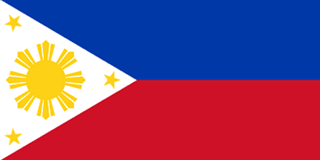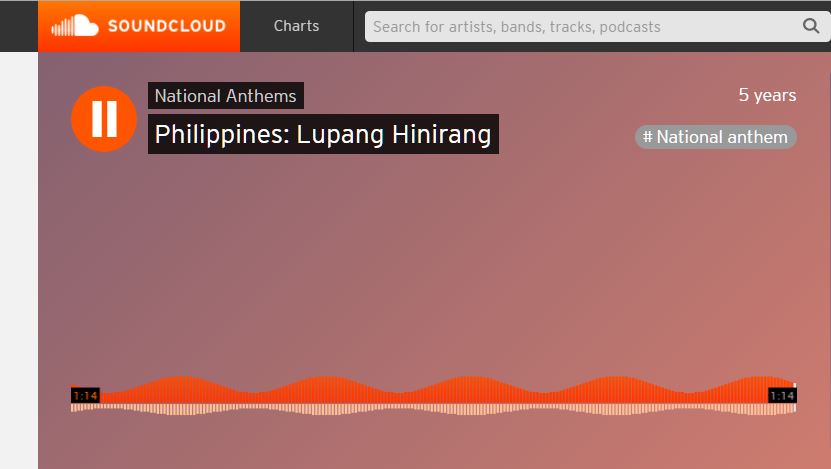Flag description: two equal horizontal bands of blue (top) and red with a white equilateral triangle based on the hoist side; in the center of the triangle is a yellow sun with eight primary rays (each containing three individual rays) and in each corner of the triangle is a small yellow five-pointed star.
The Making of the Philippine Flag: During his exile in Hongkong in 1897, Gen. Emilio Aguinaldo designed the Filipino flag as it looks today. The flag was sewn by Dona Marcela Marino de Agoncillo with the help of her daughter Lorenza and Mrs. Delfina Herbosa de Natividad (niece of the Philippine National Hero – Dr. Jose P. Rizal). It was first raised during the declaration of Independence on June 12, 1898 in Kawit, Cavite. It was made of silk with a white triangle containing a sunburst of eight rays at the center, a five-pointed star at each angle of the triangle, a blue field and a red field. The white triangle stands for equality and fraternity; the blue field for peace, truth and justice; and red field for patriotism and valor. The eight rays of the sun stand for the first eight provinces that the colonizers have put under martial law. The three stars symbolize Luzon, Visayas, and Mindanao.
Bayang Magiliw
perlas ng Silanganan
Alab ng puso
Sa dibdib mo’y buhay
Lupang hinirang
Duyan ka ng magiting
Sa manlulupig
Di ka pasisiil.
Sa dagat at bundok
Sa simoy at sa langit mong bughaw
May dilag ang tula
At awit sa paglayang minamahal
Ang kislap ng watawat mo’y
Tagumpay na nagniningning
Ang bituin at araw niya
Kailan pa ma’y di magdidilim
Lupa ng araw
ng luwalhati’t pagsinta
Buhay ay langit sa piling mo.
Aming ligaya
Na pag may mang-aapi
Ang mamatay nang dahil sa iyo.’
*The Philippine National Anthem was composed by Julian Felipe, a Filipino music teacher and composer of Cavite. It was first played by the band of San Francisco de Malabon during the unfurling of the Filipino flag at Kawit during the Independence Day ceremony.
For more than a year, the anthem remained without words. Towards the end of August of 1899, a young poet-soldier named Jose Palma wrote the poem titled Filipinas. This poem expressed in elegant Spanish verses the ardent patriotism and fighting spirit of the Filipino people. It became the words of the anthem, and today, the anthem is sung in Filipino, its official lyrics translated by Felipe de Leon, from the original Spanish lyrics in the early 1900s.


